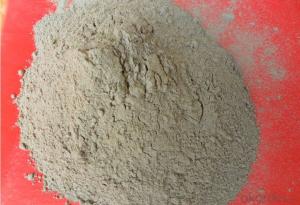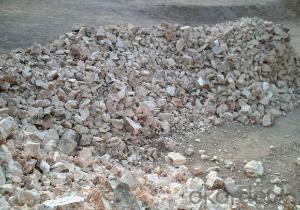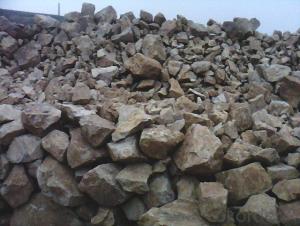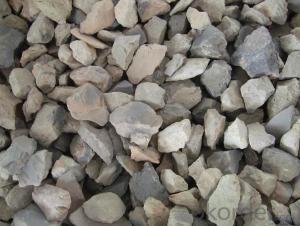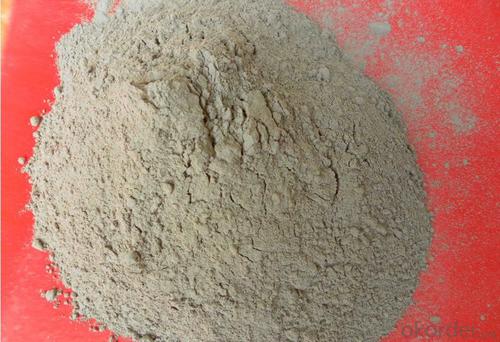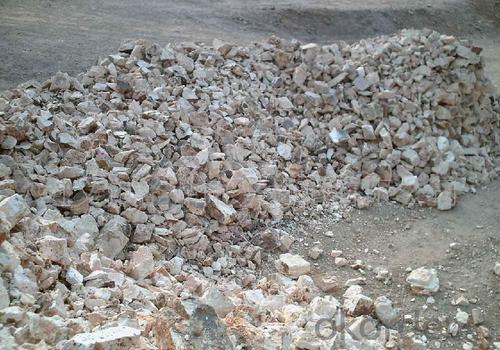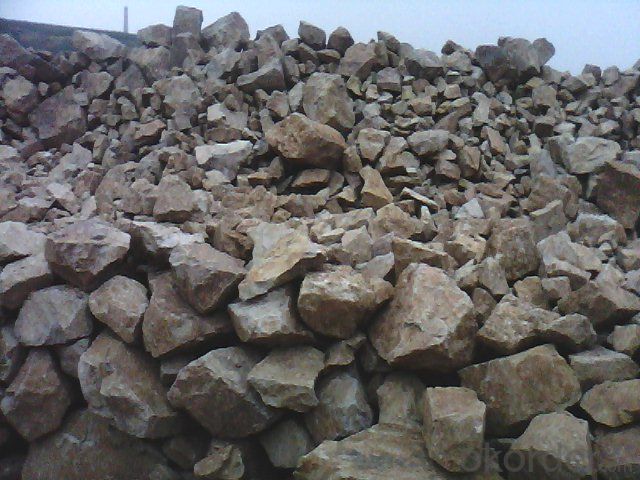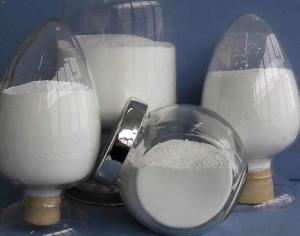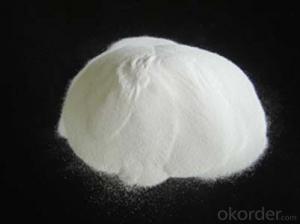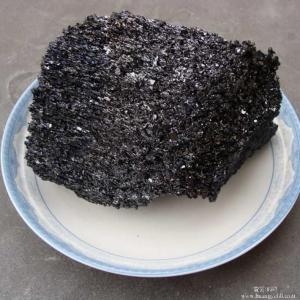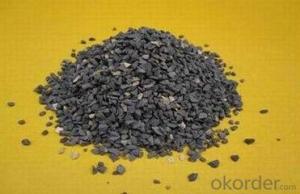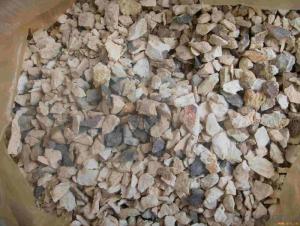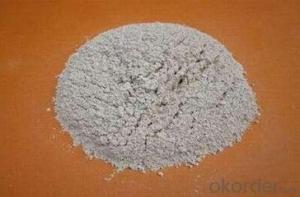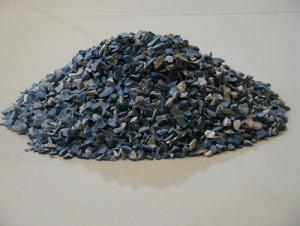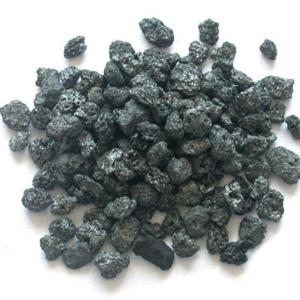Raw Materials for Refractory:Bauxite with Cheap Price Originated in China Popular Foundry Products
- Loading Port:
- Tianjin
- Payment Terms:
- TT or LC
- Min Order Qty:
- 11 m.t.
- Supply Capability:
- 10000000 m.t./month
OKorder Service Pledge
OKorder Financial Service
You Might Also Like
1.Structure of Calcined Bauxite Description
Bauxite with Cheap Price Originated in China Popular Foundry Products
Bauxite (aluminous soil; Bauxite) is also called the alumina or bauxite, main ingredients are alumina, hydrated alumina containing impurities, is an earthy mineral. White or gray, brown and yellow or light red by iron. From 4 to 3.9 g/cm3 density, hardness, 1 ~ 3 is not transparent, very brittle. Very difficult to melt. Insoluble in water, soluble in sulfuric acid, sodium hydroxide solution. Mainly used for aluminium, refractory material.
2.Main Features of the Calcined Bauxite
Bauxite with Cheap Price Originated in China Popular Foundry Products
Calcined bauxite is one of the principal ore of aluminum. Calcined bauxite contains hydrous aluminum oxides and aluminum
hydroxides, formed through the laterization of aluminous rocks in tropical and subtropical areas .Calcined bauxite is obtained by calcining (heating)superior grade bauxite at high temperature (from 85OC to 1600C) .This removes moisture there. By increasing the alumina content,compared to an alumina content of about 57%to 58% in raw bauxite, calcined bauxite has an alumina content of 84%to88%.The heating is carried out in rotary kilns.
3.Main usage of the Calcined Bauxite
Bauxite with Cheap Price Originated in China Popular Foundry Products
(1) aluminium industry. Used in national defense, aerospace, automotive, electronics, chemical industry, daily necessities, etc.
(2) precision casting. Alumina clinker made after the mould precision casting processed into fine powder. Used in military industry, aerospace, communications, instrumentation, machinery and medical equipment department.
(3) is used for refractory products. High bauxite clinker refractoriness is as high as 1780, chemical stability strong, and good physical properties.
(4) aluminum silicate refractory fiber. With light weight, high temperature resistance, good thermal stability, low thermal conductivity, heat capacity is small and the advantages of resistance to mechanical shock. Used in iron and steel, nonferrous metallurgy, electronics, petroleum, chemical, aerospace, atomic energy, defense and other industries.
(5) in magnesia and bauxite clinker as raw materials, add the appropriate binder, used for pouring ladle whole ladle lining has particularly good effects.
(6) manufacture alumina cement, abrasive materials, ceramic industry and chemical industry can be aluminum of various compound.
4. Calcined Bauxite Images
Bauxite with Cheap Price Originated in China Popular Foundry Products

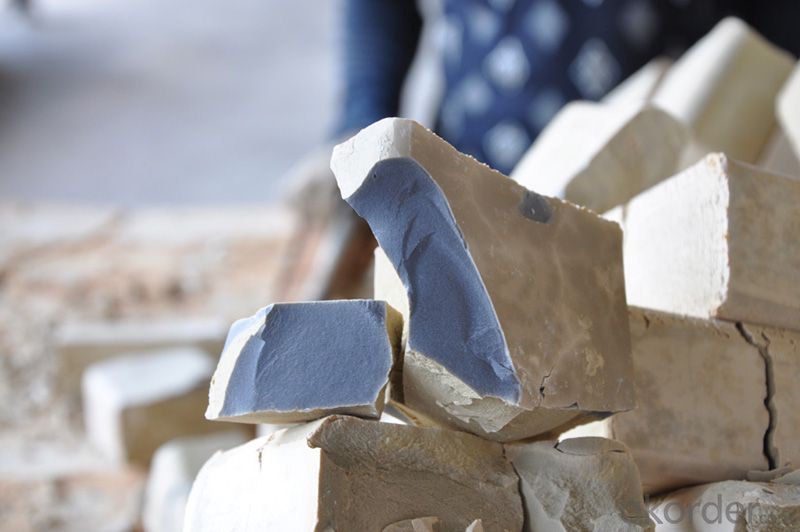
5. Calcined Bauxite Specification
Bauxite with Cheap Price Originated in China Popular Foundry Products
Items | Al2O3 | Fe2O3 | B.D. | K2O+Na2O | CaO+MgO | TiO2 |
90 | 90%min | 1.8%max | 3.4min | 0.3%max | 0.5%max | 3.8%max |
89 | 89%min | 2.0%max | 3.38min | 0.3%max | 0.5%max | 4%max |
88 | 88%min | 2.0%max | 3.35min | 0.3%max | 0.5%max | 4%max |
87 | 87%min | 2.0%max | 3.30min | 0.3%max | 0.5%max | 4%max |
86 | 86%min | 2.0%max | 3.25min | 0.3%max | 0.5%max | 4%max |
85 | 85%min | 2.0%max | 3.20min | 0.3%max | 0.5%max | 4%max |
83 | 83%min | 2.0%max | 3.15min | 0.3%max | 0.5%max | 4%max |
6.FAQ of Calcined Bauxite
Bauxite with Cheap Price Originated in China Popular Foundry Products
1). Q: Are you a factory or trading company?
A: We are a factory.
2). Q: Where is your factory located? How can I visit there?
A: Our factory is located in ShanXi, HeNan, China. You are warmly welcomed to visit us!
3). Q: How can I get some samples?
A: Please connect me for samples
4). Q: Can the price be cheaper?
A: Of course, you will be offered a good discount for big amount.
- Q: Who knows the refractoriness of high temperature lightweight firebricks?
- Hefei Jiu oak decor help you answer; the biggest feature is refractory: refractoriness 700.
- Q: How to divide the fire rating standards of insulation materials?
- The fire rating classification standards of insulation materials, 1. Insulation materials with A-level combustion performance: inorganic fiber spraying, rock wool, glass wool, foam glass, ceramic foam, foam cement, close-celled perlite, etc. 2. Insulation materials with B1-level combustion performance: specially-treated extruded polystyrene boards(XPS)/ specially-treated Polyurethane(PU), Phenolics, Polystyrene rubber powder particles,etc. 3. Insulation materials with B2-level combustion performance: Expanded polystyrene sheets(EPS), Extruded polystyrene board(XPS), Polyurethane(PU), Polyethylene(PE), etc.
- Q: Who knows that among refractory materials, insulation boards from which refractory material industry is superior in quality?
- Using high temperature insulation material during casting process .In the molding, assembly the insulation?board on the ingot head or install heat insulation cap . There are three ways to install the molded steel insulation board and install insulation?board on at the head of the ingot, namely, clamping, nail fixation and mosaic technique.Compared with clay-based liner, the use of insulating board will improve high steel billet rate up to about 5% to 10%.
- Q: What is the acceptance standard of refractory?
- It depends on the variety of materials. In general the main test items include chemical composition, refractoriness, refractoriness under load, creep, volume density, linear change, strength, slag resistance, thermal conductivity and thermal expansion. If it is shaped products, it is required to inspect the size deviation and whether it has edge. Detection method accords with the relevant national standards and there are lots of them. You can refer to the standard compilation.
- Q: How many refractories are there for boiler above 1200 ℃?
- Ordinary clay brick is for burning layer, red brick for external wall, light clay brick for thermal insulation layer, built by clay refractory mortar. Sindeyuan Refractories.Hope you adopt. Thank you. In fact, there are many manufacturers producing furnace burden. We has been using products of Huaheng, which are anti-erosion, easy to construct and can improve production efficiency, reduce steelmaking cost.
- Q: Can anyone tell me what is a high alumina refractory?
- Refractories refer to a class of inorganic non-metallic materials whose refractoriness are no less than 1580 ℃. Refractoriness is the Celsius temperature when cone-shaped samples can resist high temperature without softening and melting down in the absence of a load. But it is not accurate to define refractory merely by judging that whether the refractoriness is no less than 1580 ℃. Currently, the materials whose physical and chemical properties allow them to be used in high temperature environments are called refractories. Refractory materials are widely used in metallurgy, chemical industry, petroleum, machinery manufacturing, power and so on, among which the metallurgical industry is the largest demander in this regard, accounting for 50% to 60% of total output. Hope it will help you out!
- Q: How many types of fire-resistant material?
- 1. Acid fire-resistant material refers to one with more than 93% SiO2. It is featured by resistance to the corrosion of acidic slag ad high temperature and easy to react with alkaline molten slag. 2. Alkaline refractory material generally refers to one with magnesium oxide or magnesium oxide and calcium oxide as the main component. It has high refractoriness and strong resistance to basic slag. 3. Silicate aluminum refractory material refers to one with SiO2, Al2O3 as the main component. According to the content of Al2O, it can be divided into three categories: half siliceous (15-30% Al2O3), clay (Al2O3 30 ~ 48%), high aluminum (more than 48% of Al2O3). 4. Fused cast refractory material refers to shaped refractory products made by high temperature melting and casting.
- Q: How is the development of Xinmi refractories industry? What's its advantages and disadvantages?
- The disadvantage is too small yard, vicious competition among each other and confusion in the market, which should be the inferiority of national refractory industry . Xinmi Refractory is well developed in recent years, mostly acidic and neutral refractories. It is still relatively rare to use in iron parts, steel pile with a satin and other basic refractory slide .
- Q: Who knows what fire heat preservation material are there?
- Organic material, polystyrene board, plastic extruded board, phenolic resin. Sea capacity module (fire insulation materials fire performance can reach the B1 level, thermal conductivity is only 0.028w\m - K is a good choice, class A fireproof materials now is the mainstream rock wool (mineral wool is wool). A1 fire resistance The largest manufacturer is Thai stone rock wool Co. Ltd.
- Q: what materials can make external wall fireproofing paint have the fireproofing effect
- Fire retardant coatings are generally used for fireproofing and fire?retardant of steel structure buildings, large stadiums, railway stations, thermal power station, nuclear power plants, urban tunnels, large-scale industrial plants, warehouses, flammable material surface. Improve the refractory time of buildings and combustible materials.
Send your message to us
Raw Materials for Refractory:Bauxite with Cheap Price Originated in China Popular Foundry Products
- Loading Port:
- Tianjin
- Payment Terms:
- TT or LC
- Min Order Qty:
- 11 m.t.
- Supply Capability:
- 10000000 m.t./month
OKorder Service Pledge
OKorder Financial Service
Similar products
Hot products
Hot Searches
Related keywords
